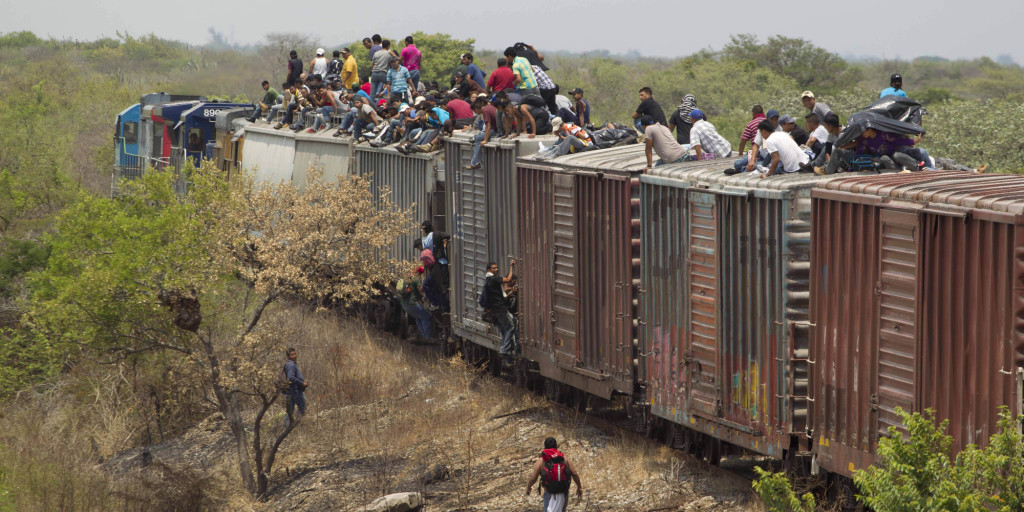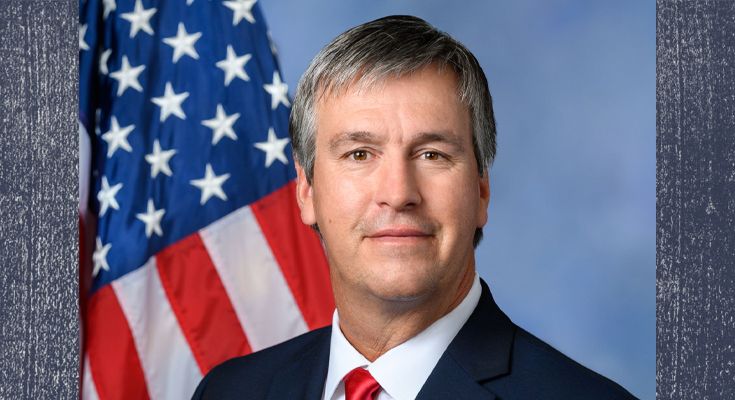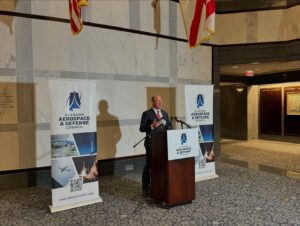President Donald Trump will use his executive authority Wednesday to jumpstart construction of his proposed U.S.-Mexico border wall, one of his signature campaign promises. He is also expected to target so-called sanctuary cities and potentially restrict the flow of refugees to the United States, according to administration officials.
The president will sign the first actions — including the measure authorizing work on the wall —during a trip to the Department of Homeland Security Wednesday afternoon. He’ll also move to increase the number of border patrol and Immigration and Customs Enforcement agents.
On his personal Twitter account Tuesday night, Trump tweeted: “Big day planned on NATIONAL SECURITY tomorrow. Among many other things, we will build the wall!”
The president is said to still be weighing the details of plans to curb the number of refugees coming to the U.S. The current proposal includes at least a four-month halt on all refugee admissions, as well as a temporary ban on people coming from some Muslim-majority countries, according to a source from a public policy organization that monitors refugee issues. The person was briefed on the details of that proposed action by a government official and outlined the plan to The Associated Press.
The officials and the public policy organization source insisted on anonymity in order to outline the plans ahead of the president’s official announcements.
Trump campaigned on pledges to tighten U.S. immigration policies, including strengthening border security and stemming the flow of refugees. His call for a border wall was among his most popular proposals with supporters, who often broke out in chants of “build that wall” during rallies.
In response to terrorism concerns, Trump controversially called for halting entry to the U.S. from Muslim countries. He later turned to a focus on “extreme vetting” for those coming from countries with terrorism ties.
While the specifics of Trump’s orders were unclear, both administration officials said Wednesday’s actions would focus in part on the president’s plans to construct a wall along the southern border with Mexico. He’s also expected to move forward with plans to curb funding for cities that don’t arrest or detain immigrants living in the U.S. illegally — localities dubbed “sanctuary” cities — which could cost individual jurisdictions millions of dollars.
Trump has insisted that Mexico will pay for construction of the border wall, though he has not detailed how he make that happen given the Mexican government’s insistence that it will not cover the costs. Earlier this month, Trump said the building project would initially be paid for with a congressionally approved spending bill and Mexico would eventually reimburse the U.S.
Trump is expected to discuss the matter with Mexican President Enrique Pena Nieto when he visits the White House next week.
In claiming authority to build a wall, Trump may rely on a 2006 law that authorized several hundred miles of fencing along the 2,000-mile frontier. That bill led to the construction of about 700 miles of various kinds of fencing designed to block both vehicles and pedestrians.
The Secure Fence Act was signed by then-President George W. Bush, and the majority of that fencing in Texas, New Mexico, Arizona and California was built before he left office. The last remnants were completed after President Barack Obama took office in 2009.
The Trump administration also must adhere to a decades-old border treaty with Mexico that limits where and how structures can be built along the border. The 1970 treaty requires that structures cannot disrupt the flow of the rivers, which define the U.S.-Mexico border along Texas and 24 miles in Arizona, according to The International Boundary and Water Commission, a joint U.S.-Mexican agency that administers the treaty.
Other executive actions expected Wednesday include ending what Republicans have labeled a catch-and-release system at the border. Currently, some immigrants caught crossing the border illegally are released and given notices to report back to immigration officials at a later date.
If Trump’s actions result in those caught being immediately jailed, the administration would have to grapple with how to pay for additional jail space and what to do with children caught crossing the border with their parents.
It appeared as though the refugee restrictions were still being finalized. The person briefed on the proposals said they included a ban on entry to the U.S. for at least 30 days from countries including Iran, Iraq, Libya, Somalia, Sudan and Yemen, though the person cautioned the details could still change.
There is also likely to be an exception for those fleeing religious persecution if their religion is a minority in their country. That exception could cover Christians fleeing Muslim-majority nations.
As president, Trump can use an executive order to halt refugee processing. Bush used that same power in the immediate aftermath of the Sept. 11 attacks. Refugee security vetting was reviewed and the process was restarted several months later.
Republished with permission of The Associated Press.
Related
Share via:














